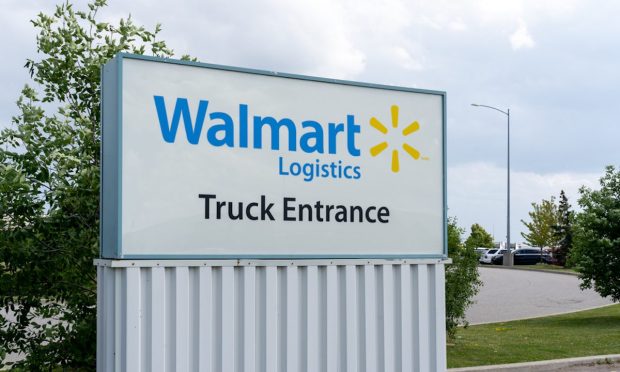Grocers Aim to Escape eCommerce Labor Bind With Automated Fulfillment

With the rise of online orders demanding more labor from grocery workers, such as picking and packing, at a time when the industry is experiencing a staffing shortage, many grocers are turning to microfulfillment and other automated solutions. On Monday (Oct. 20), Walmart, the world’s largest grocer, announced the details of its next automated grocery distribution center, following a July announcement that the company aims to automate more than half of its regional distribution centers.
Read more: Walmart Aims to Revamp Regional Distribution Network With Robotics
“Walmart’s high-tech grocery distribution center will include game-changing innovations that are radically disrupting the supply chain, getting products onto shelves for our customers even faster, while saving time for our associates,” David Guggina, senior vice president, automation and innovation at Walmart U.S., said in a statement.
The 720,000+-square-foot distribution center will open in Spartanburg County, South Carolina in 2024, and the news release states that it will be able to fulfill twice as many orders as a traditional facility.
The announcement comes just one week after Kroger, the largest pure-play grocer in the United States, announced a partnership with U.K.-based grocery technology company Ocado Group to create several new automated warehouses on the East and West Coasts.
You may also like: Grocers Aim to Escape Reliance on Instacart With In-House eCommerce Fulfillment
Automated warehouses, including smaller-footprint micro-fulfillment centers (MFCs), are quickly becoming table stakes for large brands looking to compete in today’s competitive omnichannel grocery market. Albertsons Companies, Ahold Delhaize USA and H-E-B, among others, have all tapped MFCs to fulfill eCommerce orders. Additionally, in June, it was reported that leading third-party online grocery solution Instacart has been looking into opening its own MFCs.
By the Numbers
Findings from PYMNTS’ report “The Bring-It-to-Me Economy,” created in collaboration with Carat from Fiserv, indicate that 46% of consumers are buying more groceries online than before March 2020. Additionally, research from PYMNTS’ report, What Consumers Expect From Their Grocery Shopping Experiences, created in collaboration with ACI Worldwide, found that 76% of consumers shopping for groceries online are doing so because it is “easier and more convenient” than shopping in stores, and 57% because it is faster.
More details: Bring-It-to-Me Economy Ascends as Consumers Embrace Home-Centric Lifestyles
And also: Digital Features Can Help Grocers Win Over 43% of Shoppers
What Insiders Are Saying
“Micro-fulfillment is central to our expansion strategy and underscores our industry innovation,” FreshDirect Chief Operating Officer Timothy Knoll told PYMNTS in an interview. “The technology allows us to turn our existing regional facilities into high-velocity automated distribution centers, speeding our expansion and growth in our existing service footprint.”
The shift toward micro-fulfillment was accelerated by the rise in eCommerce grocery orders, which forced grocers to rethink their fulfillment processes to keep in-store operations flowing smoothly.
“COVID [has] caused a lot of grocers to examine and reexamine [their] strategies,” Colman Roche, vice president of eCommerce and retail at logistics solutions provider Swisslog, told PYMNTS. “They’ve been going through the process of trying to get pickers into stores and react, but they run very quickly into congestion problems within stores, which scares regular customers.”
Related news: FreshDirect Looks to Micro-Fulfillment for Post-Pandemic Expansion
Plus: MFCs Shift Focus of Online Grocery to Long-Term Growth
